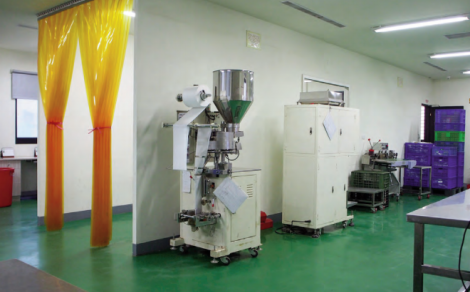Improving sustainability in food processing

Energy efficiency is an important consideration for sustainability and reducing the carbon footprint of manufacturing. In any industry, sustainability is a growing concern. Manufacturers are taking action by implementing innovative technologies that tackle the waste of energy but also wider sustainability concerns, such as recyclability and waste management. Here, Neil Bellinger, head of EMEA at automation parts supplier EU Automation, discusses three of the most popular trends for improving energy efficiency and sustainability in food and drink processing.
The food industry has a history of lagging in environmental performance compared to other industries, as news reports show. In fact, the industry’s environmental impact is significant, accounting for a quarter of the world’s greenhouse emissions, according to a study by Our World in Data. The global food system, which encompasses manufacturing, processing and distribution, is a key contributor to climate change. Today, technologies are emerging to help improve sustainability in this field, particularly in increasing energy efficiency. Let’s explore three of them with the highest potential for energy saving.
Cold pasteurisation
When chemist Louis Pasteur developed pasteurisation back in 1864, it helped save millions of lives by inactivating bacteria within foods such as dairy products, preserving them for longer. Today, almost all liquid products are pasteurised, from regular milk to soda and plant-based drinks. While this revolutionary process is inevitable nowadays, it also reduces the product’s organoleptic quality and consumes vast amounts of energy.
The issues faced by Pasteur at his time were different than the ones we face nowadays. The pressing consequences of climate change and the greater requirements for food safety have led engineers to advance cold pasteurisation using UV light instead of heat. This innovation is said to reduce energy by more than 90% and shrink operation costs, as it does not require centrifugal equipment used in conventional pasteurisation.
When heat is used many qualities of a product are lost, like food’s vitamins and proteins. Cold pasteurisation helps maintain those qualities and preserve the natural taste of the product. Not only that, but researchers at pasteurisation solutions companyLyras, found that UV irradiation increases shelf life due to its high bacterial kill rate and treatment of spores.
Infrared heating
Infrared (IR) heating is another emerging technology that responds to some of the needs and trends of food processing, such as rapid heath transfer. IR heating is a very versatile technique that can be applied to various food processes, such as drying, baking, roasting, bleaching and even pasteurisation. Apart from reducing heating time, providing uniform heating and requiring compact equipment, IR heating is also beneficial for saving great amounts of energy.
Despite the benefits it provides over conventional heating, IR heating is primarily efficient for surface heating applications. In order to achieve an optimal level of energy and be practical in the food industry, IR heating can be combined with microwave and other common conductive and convective modes of heating. Nevertheless, as experts suggest in Infrared heating and its application in food processing , IR heating is an insightful area of research which holds great potential for food processing, especially in operations such as drying and minimal processing.
-
PPMA 2025
23 September, 2025, 9:30 - 25 September, 2025, 16:00
NEC, Birmingham UK -
Advanced Engineering Show 2025
29 October, 2025, 9:00 - 30 October, 2025, 16:00
NEC, Birmingham UK










